So, you want to reel in the big ones and become a pro at safe line fishing, huh? Well, let's talk about the key to hooking those ideal fish while keeping your fishing expedition smooth sailing.
There's a secret to mastering this art, and it starts with understanding the right techniques and gear. But that's just the beginning – stay tuned to uncover some valuable tips that will take your fishing game to the next level.
Key Takeaways
- Wear gloves for safety and protection while hand lining
- Choose suitable fish species for successful hand lining
- Master essential techniques to enhance hand lining skills
- Control line tension and bait depth for effective catches
Hand Lining Safety and Best Practices
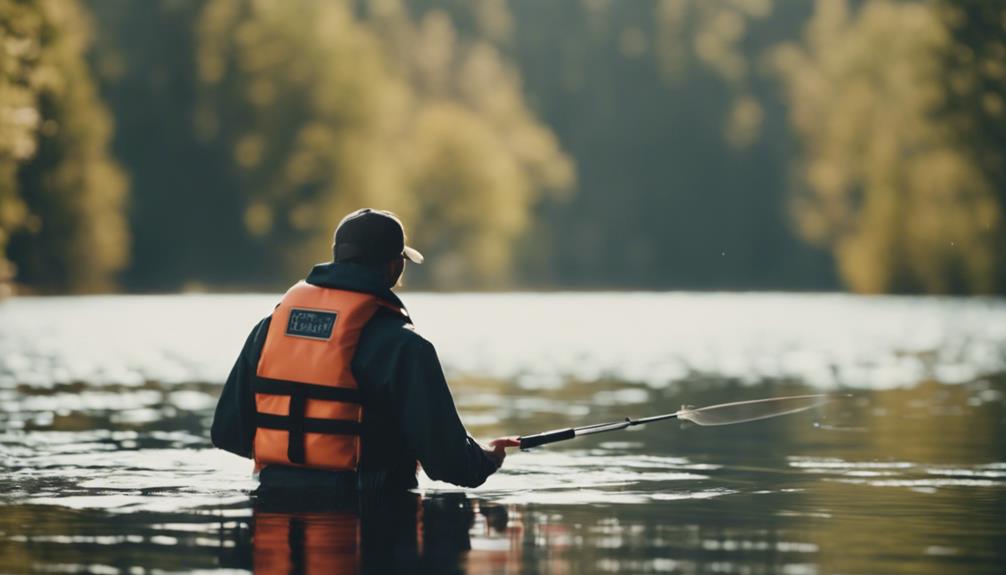
When hand lining for fishing, remember to always wear gloves to protect your hands from abrasions and cuts. Hand lining is a fishing method that involves using a single line and lure without a rod and reel.
To practice safe hand lining, it's important to maintain tension on the line. This allows you to feel when a fish is biting and helps you set the hook effectively. Avoid sudden jerks or tugs on the line to prevent losing the fish.
Hand lining is versatile and can be used to catch various fish species in different environments. By following these safety measures and best practices, you can enhance your hand lining skills and enjoy a successful fishing experience.
Types of Fish for Hand Lining
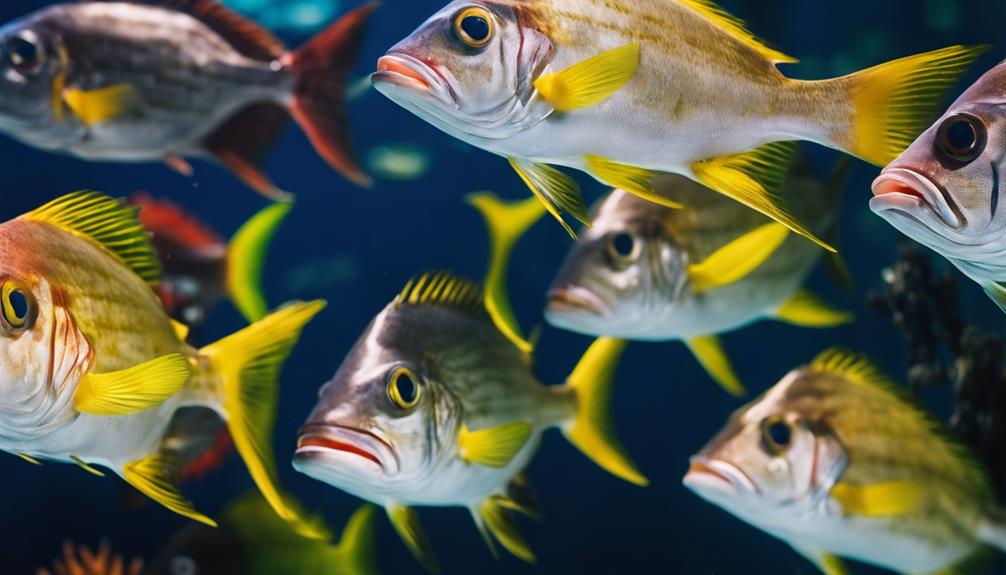
If you're looking to target specific fish species, understanding the types of fish suitable for hand lining can enhance your fishing success. Hand lining is great for catching snapper, grouper, mackerel, and small tuna. Different fish require specific hand lining techniques to prevent line breakage and maximize success.
Bottom-dwelling fish like snapper and grouper are best caught using hand lining due to its direct approach. For smaller fish, use light to medium-weight lines, while heavier lines are necessary for larger, more powerful fish like tuna. Knowing the feeding patterns and behavior of different fish species is essential for a successful hand lining experience.
Ideal Fish for Hand Lining
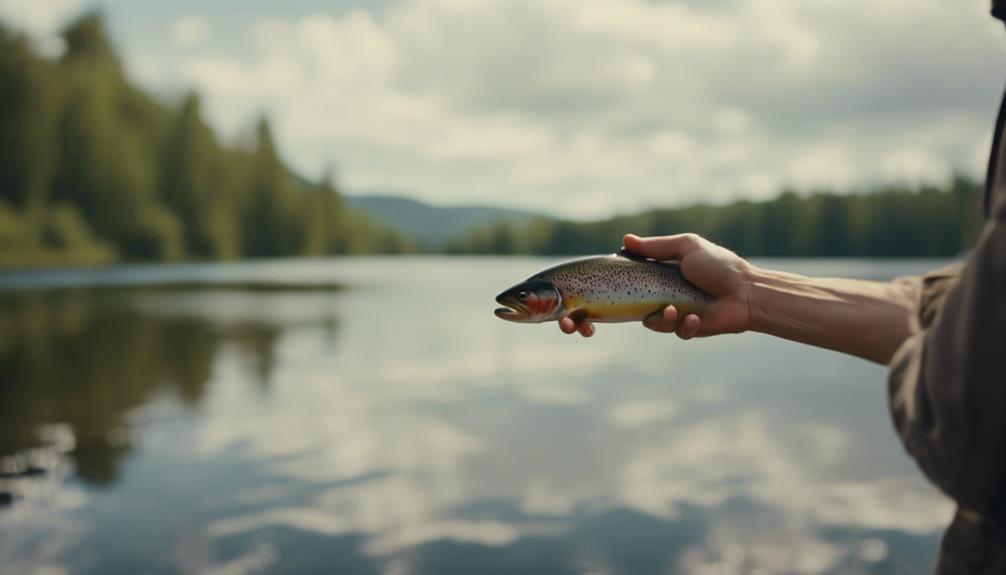
Hand lining is most suited for targeting smaller to medium-sized fish species like panfish, trout, catfish, and smaller saltwater species. This traditional fishing method is perfect for shore fishing, docks, or piers where you can enjoy a hands-on experience.
Using hand lining rigs such as single-hook setups or multi-hook dropper rigs can help you land these smaller fish effectively. To be successful, you'll need good manual dexterity to feel the bites and set the hook just right.
With hand lining, you'll feel the thrill of the fight as you reel in your catch. So, next time you're out fishing, consider trying hand lining for a more interactive and rewarding fishing experience.
Techniques for Hand Lining Success
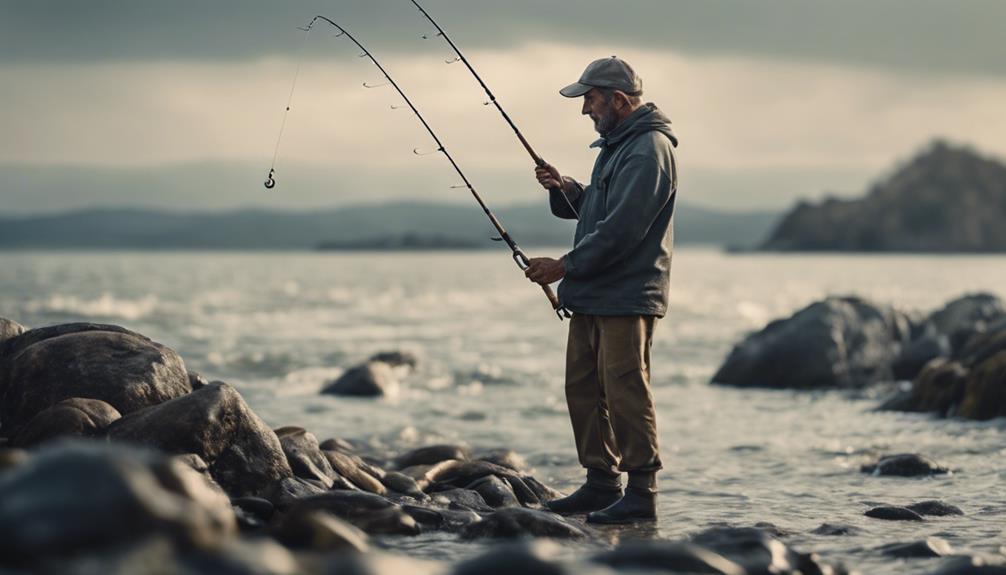
For better success with hand lining, focus on mastering essential techniques that enhance your control and sensitivity while fishing. When hand lining, keep these tips in mind:
- Control the Line: Practice controlling the tension on the line by adjusting it with your hand. This helps in playing the fish and avoiding break-offs.
- Feel for Bites: Develop a keen sense of feeling for when a fish is nibbling on your bait by paying attention to subtle movements or tugs on the line.
- Land Fish with Finesse: When you feel a fish on the line, use your skill to carefully bring it in without the aid of a rod or reel, especially important when dealing with smaller fish species.
Tips for Safe and Effective Hand Lining
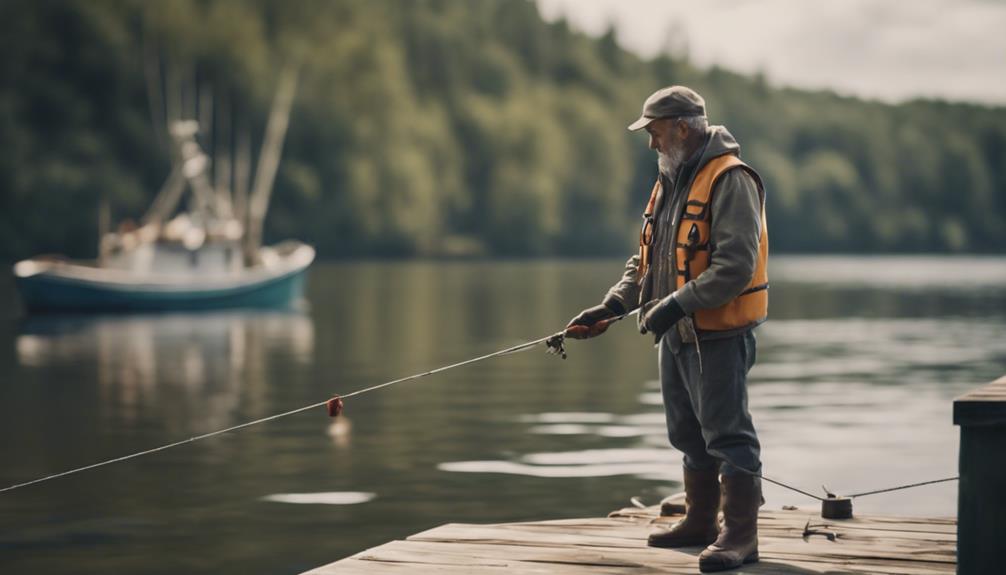
To secure a safe and effective hand lining experience, prioritize wearing protective gloves to prevent injuries and maintaining a firm grip on the line.
Essential measures are vital in hand lining to avoid cuts and friction on your hands.
When fishing with this technique, remember to control the depth of your bait or lure based on the species you're targeting.
Proper techniques like setting the hook accurately and keeping tension on the line will help you land your catch successfully.
Hand lining is versatile, suitable for various species such as panfish in freshwater or snapper in saltwater.
Conclusion
To sum up, mastering safe line fishing is all about using the right bait, lures, and techniques while paying attention to weather and tides. By following these tips and guidelines, you can increase your chances of a successful fishing trip while staying safe on the water.
Remember to always prioritize safety and enjoy the thrill of catching ideal fish species with hand lining. Happy fishing!
👨👩👧👦 Dwight’s a married dad of 4 who loves to cast a line 🎣 into both fresh and salt waters. His heart belongs to his family and the sea. 🌊 #FamilyMan #FishingLife #DadOf4 🐟✨

